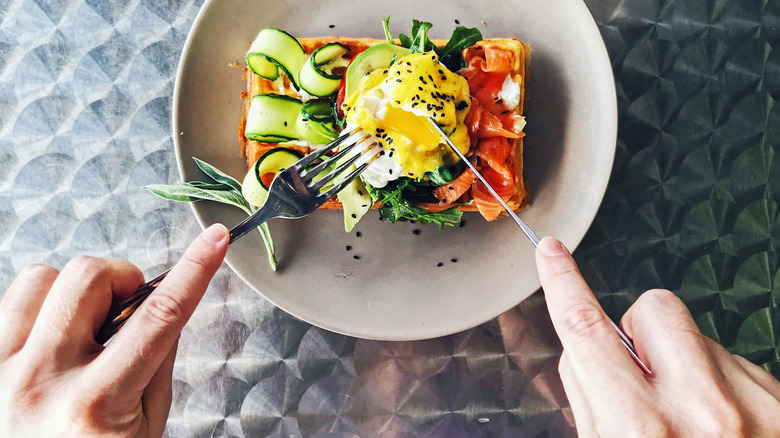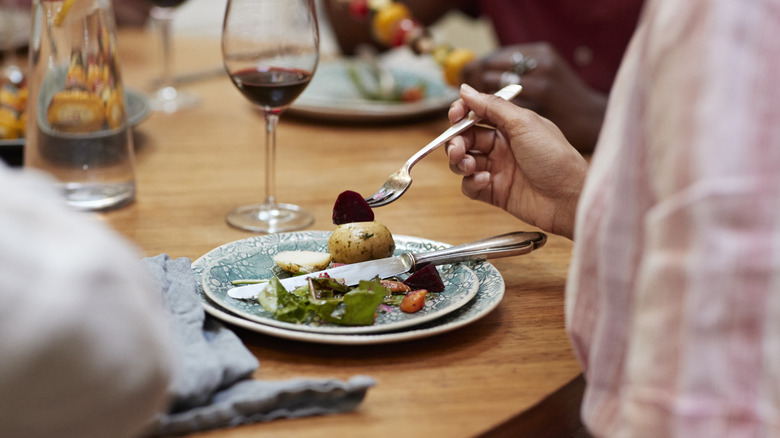Is The European Way Of Holding A Fork More Efficient?
Table manners and dining etiquette vary across cultures, but if you're lucky enough to have dined out abroad, you've no doubt noticed a big difference between the American and European style of eating. The European style, often called the "Continental style," involves holding the fork in the left hand and the knife in the right hand throughout the meal — no switching up. In contrast, the American style, also known as the "zigzag" method, involves cutting food with the knife in the right hand, then switching the fork to the right hand to eat. So, is the European style of fork and knife etiquette better? Well, it depends.
From a purely mechanical standpoint, the European method is arguably more efficient. Because you won't need to switch utensils between hands, you get to maintain a steady rhythm while cutting and eating. You'll spend less time adjusting your grip or fumbling with the fork and knife. If you happen to be at an international business dinner, this can be a subtle but meaningful power move. That, and knowing not to order messy finger foods.
Obviously, eating is more than just physical motions; it also includes habit and cultural comfort. For us Americans raised on the zigzag method, switching to the European style can feel awkward. Muscle memory plays a big role in dining, and learning a new technique can make anyone feel clumsy at first. So you can also argue that the most efficient style is just the one you grew up doing.
It's all about etiquette and cultural context
In many European countries, including Britain, the Continental style is considered the standard and proper way to eat. Switching hands might be seen as clumsy or even impolite. In contrast, both styles are generally accepted in the United States, though the zigzag method is more common. How did we end up with such different styles? Blame the French.
In 18th-century France, the "cut-and-switch" method was adopted by nobility as a more fashionable way to eat. Americans adopted it because French customs were considered the height of sophistication back then. By the 1850s, the French had moved on, but we Americans kept the practice. One French utensil rule we certainly didn't keep was never using a knife to cut your salad.
Some fans of the American method suggest that the slight pause required to switch hands encourages slower, more mindful eating. In a way, the "less efficient" method might actually be more beneficial for your health. Amusingly enough, the American style of eating has actually made its way across the pond for the younger generation, but the old-school Brits aren't having it.
We can't really claim one style is more "efficient" than the other without considering it in the context of cultural habits and comfort. The best method may not be the most efficient, but the one that fits best to the diner's needs, environment, and values. When in doubt, do what the locals do.

